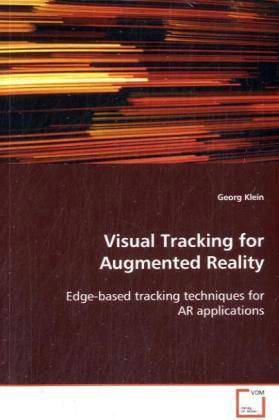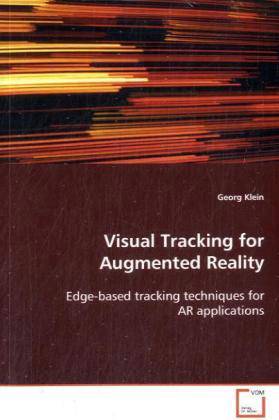
Je cadeautjes zeker op tijd in huis hebben voor de feestdagen? Kom langs in onze winkels en vind het perfecte geschenk!
- Afhalen na 1 uur in een winkel met voorraad
- Gratis thuislevering in België vanaf € 30
- Ruim aanbod met 7 miljoen producten
Je cadeautjes zeker op tijd in huis hebben voor de feestdagen? Kom langs in onze winkels en vind het perfecte geschenk!
- Afhalen na 1 uur in een winkel met voorraad
- Gratis thuislevering in België vanaf € 30
- Ruim aanbod met 7 miljoen producten
Zoeken
Visual Tracking for Augmented Reality
Edge-based tracking techniques for AR applications
Georg Klein
Paperback | Engels
€ 67,45
+ 134 punten
Omschrijving
In Augmented Reality applications, the real
environment is annotated or enhanced with
computer-generated graphics. These graphics must be
exactly registered to real objects in the scene and
this requires AR systems to track a user's viewpoint.
This book shows that visual tracking with inexpensive
cameras (such as those now often built into mobile
computing devices) can be sufficiently robust and
accurate for AR applications. Visual tracking has
previously been applied to AR, however this has used
artificial markers placed in the scene; this is
undesirable. This thesis explores edge-based tracking
as an efficient and accurate alternative, and
explored methods to improve the robustness of
edge-based tracking against rapid user motions. This
thesis also shows how CAD models of the scene can be
used to correctly clip virtual graphics, improving
the perceived realism of the scene.
environment is annotated or enhanced with
computer-generated graphics. These graphics must be
exactly registered to real objects in the scene and
this requires AR systems to track a user's viewpoint.
This book shows that visual tracking with inexpensive
cameras (such as those now often built into mobile
computing devices) can be sufficiently robust and
accurate for AR applications. Visual tracking has
previously been applied to AR, however this has used
artificial markers placed in the scene; this is
undesirable. This thesis explores edge-based tracking
as an efficient and accurate alternative, and
explored methods to improve the robustness of
edge-based tracking against rapid user motions. This
thesis also shows how CAD models of the scene can be
used to correctly clip virtual graphics, improving
the perceived realism of the scene.
Specificaties
Betrokkenen
- Auteur(s):
- Uitgeverij:
Inhoud
- Aantal bladzijden:
- 176
- Taal:
- Engels
Eigenschappen
- Productcode (EAN):
- 9783639078916
- Uitvoering:
- Paperback
- Afmetingen:
- 150 mm x 220 mm
- Gewicht:
- 242 g

Alleen bij Standaard Boekhandel
+ 134 punten op je klantenkaart van Standaard Boekhandel
Beoordelingen
We publiceren alleen reviews die voldoen aan de voorwaarden voor reviews. Bekijk onze voorwaarden voor reviews.









